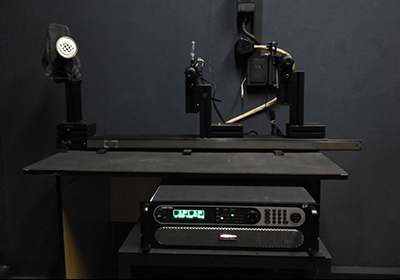Spain and Cuba have conducted joint research on atmospheric aerosols since 2007, when an agreement was signed between the University of Valladolid (UVA) in Spain and the Institute of Meteorology (INSMET) in Cuba. Last January, we convened a workshop in Camagüey, Cuba, to evaluate the progress of this cooperation and to highlight the accomplishments that we have made so far.
The only Sun photometer of its kind in Cuba has contributed measurements to NASA’s Aerosol Robotic Network.
Presentations at the workshop highlighted the progress made by three joint research projects conducted from 2008 to the present by the Grupo de Óptica Atmosférica from UVA (GOA-UVA) and the Grupo de Óptica Atmosférica de Camagüey (GOAC) from INSMET. These projects used an automated state-of-the-art Sun photometer to identify and measure the properties of optical and microphysical aerosols, which reflect and scatter solar radiation. This is the only Sun photometer of this type in Cuba, and we have contributed its measurements to NASA’s Aerosol Robotic Network (AERONET).
Speakers discussed the results of cloud optical depth (COD) statistics that AERONET calculated using 1 year’s worth of measurements from our Sun photometer. They found a bimodal COD frequency distribution for all months. Coincident COD measurements from both the Sun photometer and Cloud-Aerosol Lidar with Orthogonal Polarization (CALIOP) show the same frequency distributions for COD values lower than 5.
In addition, presentations focused on analysis of particles with aerodynamic diameters less than 10 micrometers (PM-10) and 1 micrometer (PM-1) over a 2-year period using a low-volume impactor to collect particles. Researchers have made gravimetrical measurements to quantify the concentration of the particles they collected at each range of aerodynamic diameters.
Other presentations focused on how, through aerosol optical depth (AOD) and Ångström exponent measurements, scientists have determined that maritime aerosols are the most prevalent at Camagüey year-round and Saharan dust particles increase from May to August. The researchers also reported that they studied several Saharan dust events. Specifically, they compared the AOD data derived from the Sun photometer and the Moderate Resolution Imaging Spectroradiometer (MODIS) during the transport of Saharan dust with the SKIRON/Eta model outputs for Camagüey, and they determined the biases in the data from both sources.
An optical bench for the angular calibration of solar radiation sensors, the first ever in Cuba, was inaugurated during the meeting.
One goal of the program was to characterize PM10 and PM1 fractions and their chemical compositions at Camagüey. This has been done, and we found that during a Saharan dust event, the instruments measured a PM10 maximum concentration of 73 milligrams per cubic meter. For aerosols, concentrations of sulfate and ammonium ions predominate in fine particles. For coarse particles, the main contributions are from sodium, chloride, and nitrate ions. These results were presented at the workshop.
The workshop featured six papers involving the joint studies that have been published in scientific journals with high impact factors. In addition, an optical bench for the angular calibration of solar radiation sensors, the first ever in Cuba, was inaugurated during the meeting. It was designed and built at GOA-UVA and installed at GOAC, and it began operating 2 weeks after the meeting. A proposal for automating the calibration process has been drafted in cooperation with Errico Armandillo of the European Space Agency, who attended the meeting.

Brent Holben, chair of AERONET and the first NASA scientist to visit Cuba, also attended the meeting. He discussed with the GOAC team the joint scientific interest for potential future official cooperation between GOAC-INSMET and NASA AERONET.
GOAC, the Camagüey Meteorological Province Center (CMPC), and the Province Delegation of the Ministry of Science, Technology and Environment of Cuba sponsored the workshop.
—Juan Carlos Antuña-Marrero, Grupo de Óptica Atmosférica de Camagüey, Meteorological Institute, Camagüey, Cuba; email: [email protected]; Ángel De Frutos Baraja, Grupo de Óptica Atmosférica, University of Valladolid, Valladolid, Spain; and René Estevan Arredondo, Grupo de Óptica Atmosférica de Camagüey, Meteorological Institute, Camagüey, Cuba
Citation:
Antuña-Marrero, J. C.,De Frutos Baraja, A., and Estevan Arredondo, R. (2016), Joint aerosol research between Cuba and Spain proves fruitful, Eos, 97, https://doi.org/10.1029/2016EO060125. Published on 06 October 2016.
Text subject to Crown copyright.
Except where otherwise noted, images are subject to copyright. Any reuse without express permission from the copyright owner is prohibited.
Text subject to Crown copyright.
Except where otherwise noted, images are subject to copyright. Any reuse without express permission from the copyright owner is prohibited.

